Huguangyan Scenic Spot
Huguangyan Scenic Spot
Huguangyan Scenic Spot is located 18 kilometers southwest of Zhanjiang City, the southernmost part of the mainland of China. It is called "natural yearbook" of earth and geological science by UN geologists. With a total area of 38 square kilometers, the park is a park with volcanic geology and geomorphology of Maar as the main body, coastal geomorphology, tectonic geomorphology and other geological relics, and good natural ecology.
The scenic spot is composed of 20 scenic spots such as Leiqiong World Geopark Museum, Lengyan Temple, Ligang Drunken Moon Statue, Food Happy Park, Qingfenglin, Volcanic Geological Relics, High Density Anion Zone, Dong Gongting, Maar Lake, General Chen Jitang's Tomb and Bainiu Fairy Statue. It is a tourist area integrating natural and humanistic landscapes.
Huguangyan Scenic Area is a national scenic spot, a national geological park, a national AAAA tourist spot and a national popular science education base for teenagers, ranking first among the eight scenic spots in Zhanjiang.
Development history
In the late Sui Dynasty, the Shuangyan Temple was built on rock and became one of the eighteenth largest ancient temples in China.
During the Song Dynasty, Baiyi Temple was built on the hill. Li Gang, the Prime Minister of the Song Dynasty, was demoted to Hainan by way of this place and inscribed the cliff stone carving "Huguangyan".
In 1986, a long corridor of art and culture, the Poetry Gallery, was built on the north side of the Lengyan Temple in Huguang.
In December 2001, Huguangyan Scenic Area was awarded National Geological Park.
In 2003, Huguangyan Scenic Area became a national AAAA-level tourist attraction.
In 2004, Huguangyan and Lake Marr in Germany became "sister lakes".
In May 2005, Guangyan Lake of Zhanjiang was elected the most beautiful lake in Guangdong Province.
In August 2006, the Golden Dragon Fish sculpture at Huguangyan East Gate was completed and opened. In September of the same year, Huguangyan Scenic Area was approved as "World Geopark" by UNESCO.
In 2007, the scenic spot built an indoor Avalokitesvara as high as 12.9 meters in Wanghai Building. Qingfenglin was also built and opened this year.
On January 16, 2008, Liu Zhongzhou, a Chinese calligrapher and seal-carver, visited Huguangyan and inscribed the inscription "Huxue Xiangguang" for Huguangyan.
In May 2009, Huguangyan Scenic Area was selected as the first batch of popular science bases of land and resources in China.
In May 2010, Huguangyan Scenic Area became a popular base of teaching and scientific research. In August of the same year, Huguangyan and Riyuetan signed a cooperation agreement, which opened a new chapter of tourism exchange and cooperation between Guangdong and Taiwan.
In September 2012, a statue of Li Gang drunk moon was built in the scenic spot. On November 21 of the same year, Huguangyan Scenic Area and the Zhongnanshan World Geopark in Qinling Mountains were concluded as "sister parks".
In March 2013, Huguangyan Scenic Spot was successfully awarded a pilot project of national service industry standardization, becoming the first approved pilot project of national tourism service industry standardization in Western Guangdong. On July 26, the scenic spot and Yangchun Xiaoyan National Geopark held a signing ceremony and concluded as "Sister Park". On November 27, they signed agreements with Yandang Mountain, Fangshan Mountain and Taishan World Geopark, formally concluding "Sister Friendship Park".
In July 2014, the Volcano Museum completed the basic upgrading and renovation of the former Volcano Museum and officially opened to the outside world. It has become one of the important tourism facilities in Huguangyan Scenic Area.
On October 16, 2015, Huguangyan Scenic Area and Zigong World Geopark signed an agreement to formally conclude the "sister park". In November of the same year, Huguangyan Scenic Spot passed the mid-term evaluation of "national standardization pilot project", and became a model in the pilot of service standardization in tourism industry. On December 23, Huguangyan Scenic Area became a provincial practice teaching base of resource, environment and urban and rural planning management in Leizhou Peninsula.
geographical environment
geographical position
Huguangyan Scenic Area is located in Mazhang District of Zhanjiang City, 18 kilometers southwest of Zhanjiang City, about 15 kilometers away from Xiashan District, and adjacent to Guangdong Ocean University. The total area is 38 square kilometers.
Geology and geomorphology
The Main Soils in Huguangyan scenic area are weathered residual laterite of volcanic platform and brown-red, brown-yellow sub-sandy soil and sub-clay of eroded platform, as well as grey-black muddy clay, sub-sandy soil and silty fine sand of coastal zone. The lithology of laterite distributed on volcanic platform is brown red-brick red clay and sub-clay. Under the condition of vegetation of tropical rain forest or monsoon rain forest, latosol is formed by high temperature and rainy leaching and serialization of organic matter.
Climatic characteristics
Huguangyan Scenic Spot is located in the northern margin of the tropics south of the Tropic of Cancer. It has a tropical monsoon climate with long summer and short winter and mild climate. The solar radiation is strong and the sunshine time is long. Sunshine hours are long from July to October. The temperature in January was the lowest, with an average monthly temperature of 15.8 C, and the highest in July, with an average monthly temperature of 28.9 C. Rainfall is abundant and unevenly distributed. Typhoons, droughts, sea tides and thunder and lightning are the major threats.
natural resources
Soil resources
Soil in Huguangyan scenic spot is rich in Mg, Cu, Fe, Ti and other elements and minerals. Minerals are mainly goethite, hydromica, chlorite, quartz and heavy minerals in addition to kaolinite and montmorillonite. Organic matter content is 2%-5%.
plant resources
Huguangyan Scenic Area is located in the northern margin of the tropics. Its vegetation type has the transitional nature from the south subtropics to the North tropics. It not only preserves some floristic characteristics of the South subtropics, but also has the species composition of the North tropics. Due to the influence of natural environment and human factors such as topography and climate, the plant growth is quite flourishing and the plant resources are very rich.
The main vegetation in the scenic spot can be divided into eight types: tropical rain forest, tropical monsoon rain forest and subtropical evergreen broad-leaved forest, including monsoon evergreen broad-leaved forest, moss evergreen broad-leaved forest, deciduous broad-leaved forest, mangrove, bamboo forest, shrub and grassland.
The tropical seasonal rain forest and mangrove forest are the main protected objects in the region. There are many kinds of forest plants, with remarkable development of plate roots, abundant woody vines, widespread strangulation of plants, and the phenomenon of old stem flowering is more prominent.
Wildlife resources
The fauna of Huguangyan Scenic Area belongs to Leiqiong area in geographical division, and has typical tropical and subtropical characteristics. Complex and diverse natural conditions, abundant plant species, complete forest ecosystem and superior ecological environment provide rich food and ideal habitat for all kinds of cave-dwelling, arboreal and terrestrial wildlife, with abundant animal species. There are more than 100 species of vertebrate wildlife in the park. Among them, reptiles such as turtles, turtles, clams, horsehair snakes, golden ring snakes, southern snakes, silver ring snakes, cobras, pythons and other 7 families and 9 species; animal birds such as grass sparrows, hawks, turtledoves, sparrows, pheasants, partridges, owls, kingfishes and other 6 families and 7 species.
Layout of scenic spots
Maar Lake is the core scenic spot of Huguangyan Scenic Area, with a core area of 13.6 square kilometers and a lake area of 2.3 square kilometers. It is a Maar-type volcanic lake formed by cooling and sinking after the explosion of flat volcano 140,000 to 160,000 years ago. The lake is more than 400 meters deep. Under the protection of the surrounding volcanic heaps, the lake water is not disturbed by the external water system. The lake bottom sediment layer formed by long-term natural deposition is a "natural yearbook" and "natural museum" left over from the evolution of the earth for more than 100,000 years. The road around the lake is paved with bluestone slabs, which realizes the diversion of people and vehicles, and makes the design and layout of the whole scenic area more humanized.
Huguangyan Scenic Spot is surrounded by volcanic plains. Cliffs and steep walls around the lake are clear in stratigraphy and rhythm of volcanic rocks. The water of the lake is as clear as a mirror, and its roots are grabbing stones to make a scene. There are abundant tourist resources in the scenic area, such as Lion Ridge, natural volcanic sites, cliff stone carving "Huguangyan" inscribed by Li Gang, Prime Minister of the Song Dynasty, and Leiqiong World Geopark Museum, Seismology Hall, Wanghai Tower, Leizhou Ancient Courtyard, Folk Customs Park, Bainiu Fairy Statue, Dongmen Ecological Square, Chazhuang, etc.
On the west side of Mar Lake, Baiyi'an is built on the hill and across the lake from the thousand-year-old Lingyan Temple. It is an excellent viewing point and oxygen-absorbing point to appreciate the lake scenery. There are many ancient trees, vines and lush vegetation in the scenic area. There is a high-density negative air ion area along the lakeside with a negative ion content of 105688/cubic centimeter, which can be called "Natural Oxygen Bar". On the Hunan side, there is a Poetry Gallery in the Cultural and Art Gallery. Its clear water flows downstream along the mountainside, winding and winding, forming the origin of winding water.
After the founding of the People's Republic of China, Deng Xiaoping, Dong Biwu, Guo Moruo and Chen Yi, the leaders of the Party and the state, also visited Huguangyan, leaving many precious poems and ink treasures all over the scenic spots.
Main attractions
maar lake
Huguangyan Mar Lake is a Mar-type volcanic lake formed 140-160,000 years ago by the cooling subsidence after the explosion of a flat volcano. The lake is more than 400 meters deep and covers an area of 2.3 square kilometers. Under the protection of the surrounding volcanic heaps, the lake water is not disturbed by the external water system. The lake bottom sediment layer formed by long-term natural deposition is a "natural yearbook" and "natural museum" left over from the evolution of the earth for more than 100,000 years.
Dragon fish turtle
The statue of dragon fish and tortoise in Dongmen Square is based on the legend of dragon fish and tortoise in Lake light rock. Since more than 60 students in the General Class of National Defense University first discovered the miracle of dragon fish more than 4 meters long and tortoise nearly 2 meters wide roaming the lake in the legend of Huguangyan on May 28, 1998, many tourists have witnessed the presence of big turtles and big fish in the lake. For this reason, the statue of dragon fish and tortoise was built in Dongmen Square of Huguangyan.
Leiqiong World Geopark Museum
Leiqiong World Geopark Museum is located about 100 meters west gate of Huguangyan Scenic Area. It is one of the important tourism facilities of Huguangyan. The exhibition hall has three floors with an exhibition area of about 2500 square meters. The first floor exhibition hall consists of the exhibition hall of Leizhou Peninsula volcano distribution sand table, Leiqiong World Geopark brief introduction, Leiqiong volcano knowledge, Leiqiong folk culture, Leiqiong ecological culture and world volcanic landscape; the second floor exhibition hall is divided into the film and television hall and the network exhibition hall of the World Geopark; and the third floor exhibition hall is the science and technology interactive area.
The Drunken Moon Statue of Li Gang
Li Gang's Drunken Moon sculpture was built in September 2012. It was designed by the master of Arts and crafts of Guangdong Province, the representative inheritor of Guangdong Province and the sculptor of Zhanjiang City, Mr. Jane Xiangdong. Deng Biquan, Chairman of Zhanjiang Political Consultative Conference, inscribed the inscription. It is a scenic spot built to commemorate the allusive scenes of Li Gang, Prime Minister of the Song Dynasty, and Shi Wan, the abbot of the Lengyan Temple, who wrote the words "Huguangyan" in the words of "Yue Pingming" and "Enjoying the scenery of lakes and mountains".
Clear wind forest
Qingfenglin was built in July 2007. It is a clean government education base built by the Central Discipline Commission, Guangdong Discipline Commission and Zhanjiang Discipline Commission. Qingfenglin mainly consists of Qingfenglin Square, Lianshi, Qingfengting Bamboo Forest, Lotus Pond and other main landscape.
Bai Yi an
Baiyi Temple was built in the Song Dynasty. It has a history of nearly 900 years. It is named Baiyi Temple because it has always worshipped a white clay statue of Guanyin. The cave is about 7 metres deep, 11 metres wide and 4 metres high, with a slightly prominent gallstone nest on its top. The rock chamber is as large as a hall, which can accommodate hundreds of people. There are more than 10 Buddhist statues in the hall. In 1992, a Buddhist chamber of the third generation was built in front of Baiyi Ancient Temple. There were couplets in the door of the chamber: "The lake is rippling with clear waves, the clock of Zen Temple rings the mirror and the moon; the ancient cave is sealed by rock clouds, and the forest of Lion Peak is shadowing the haze".
Poetry Gallery
Established in 1986, the Poetry Gallery is situated on the north side of the Lengyan Temple in Huguang County. It is designed according to the rise of the terrain layer of the rock wall. The corridor rotates upstream and downward. It has three layers, one by one, overlapping the Shiziling Mountains and covering the top with thick shade. At the top of the gallery, there are painted columns and painted buildings with antique flavor; the gallery wall is inlaid with marble, which is represented by seal, Li, Kai, Xing, Cao and other calligraphic forms. The poems of demoted courtiers, state and county officials who visited Huguangyan in the Song, Yuan, Ming and Qing Dynasties, local celebrities and bachelors, as well as modern leaders Dong Biwu, Chen Yi and Guo Moruo are engraved with the art of sculpture.
Wang Hai Lou
Wanghai Tower is located on the top of the highest point of Huguangyan. It is three stories high. There are stone ladders leading to the second and third floors. There are the largest and tallest statues of Guanyin in Western Guangdong. There are also free-living pools around Wanghai Tower, and a "Shimazin" archway beside Lake Marr in Huguangyan. Wanghai Tower is connected with a mountain road with thousands of Bodhi trees.
Sino-German Sister Maar Lake Memorial Plate
Huguangyan Mar Lake and Eiffel Lake in Germany are rare and non-renewable geological resources in the world. They are the "natural yearbook" and "natural museum" of global paleoclimate and paleoenvironment science research. They are also a "golden key" for human beings to open the Internet version of the Earth Labyrinth. The Eiffel region of Germany is the origin of the study of Mar Lake in Europe and the world. The Guangyan Mar Lake in Zhanjiang Lake is the starting point of the study of Mar Lake in China. At present, both lakes are world-famous volcanic geological scenic spots.
Leng Yan Temple
The temple was built in the late Sui Dynasty. It has a history of more than 1400 years. It consists of the Temple of Heaven and the Palace of Daxiong. It is one of the eighteen largest ancient temples in China. The unique feature of the Lengyan Temple lies in the Daxiong Palace, which is built from natural volcanic caves. The Temple of Heavenly Kings serves four great heavenly kings, Maitreya Buddha, Wei Pian and the Patron God. Daxiong Palace serves more than 30 Buddha statues such as Heng III Buddha (Disaster Elimination and Longevity Pharmacist Buddha, Sakyamuni Buddha, South Wu Amitabha Buddha), 18 Arhats, Thousand-Handed Guanyin, Sending Zi Guanyin, etc. On the right side of the temple, two poems of Li Gang are inscribed: "Farewell to the City and the Moon" and "Give to the Gushi".
Famous and Excellent Specialty
White-cut chicken, white-cut dog, boiled flower crab, sand insect soup, snail soup, fried shrimp cake, Leizhou Bai (Miyi), Leizhou big dumpling, wood leaf clip, glutinous rice sweet grains, sweet potato porridge; seafood category: lobster, green crab, paste crab, flower crab, jellyfish, anchovy, eel, sea cucumber, Dongfeng snail, Jiangyaozhu, etc.
Tourist guide
Ticket Service
1. Group tickets: 20% discount on group tickets for more than 30 people in travel agencies (companies).
2. Tourist bus around the lake: Battery car and environmental train can be used to tour around the lake in the scenic area. The whole journey is 7 kilometers. Adults are 15 yuan/person/circle, children are 8 yuan/person/person/circle from 1.2 meters to 1.5 meters. Tourist bicycle tour around the lake is 10 yuan/car/hour. (Zhan Bian Letter 115)
Tour Guide Service
1. Huguangyan Scenic Area Provides Tour Guide
2. Tourist guide fees are as follows: 60 yuan (less than 1.5 hours), 80 yuan (2 hours), every 15 minutes, plus 10 yuan tour guide service fee, and so on.
Cruise ship service
Vessels, Play Time, Fee Standard (RMB) and Gold (RMB) Notes
2-person electric boat 30 minutes 30 yuan per boat 100 minutes more than 10 minutes, plus 10 yuan per boat. Less than 10 minutes in 10 minutes.
4-5 person electric boat 30 minutes 60 yuan per boat 150 minutes more than 10 minutes, plus 20 yuan per boat. Less than 10 minutes in 10 minutes.
Six people electric boat 30 minutes 80 yuan per boat 200 minutes more than 10 minutes, plus 30 yuan per boat. Less than 10 minutes in 10 minutes.
Traffic Information
Self-driving travelling
Chongqing and Sichuan drive from Yuzhan Expressway to Zhanjiang Port exit, then turn right. Zhanjiang Port Direction, Shugang Avenue, Huguangyan Scenic Area (about 12 kilometers).
Guangzhou and Maoming Directions drive from Maozhan Expressway to Zhanjiang Port Exit and then down the Expressway (right turn) - Zhanjiang Port Direction (right turn) - Shugang Avenue (right turn) - Huguangyan Scenic Area (about 12 kilometers).
Hainan and Xuwen Direction drive from Zhanxu Expressway to Mazhang Exit, then turn left at 374 Provincial Highway (turn right) - Shugang Avenue (turn right) - Huguangyan Scenic Area (about 10 kilometers).
Bus
Road 9: (from Haicheng to Huguang East Gate) Haicheng starts at 6:30, last class at 21:20; Huguangyan starts at 6:30, last class at 10:00, every 10 minutes. It can go up and down halfway.
Road 3: (Xiashan General Station to Botanical Garden) The first shift is 6:30, the last shift is 18:15, and the shift is 15 minutes apart. It can go up and down halfway.
Route 6: (Cunjin Station to West Gate of Huguangyan) Chikan starts at 6:40, last class at 17:50; Huguangyan starts at 6:10, last class at 18:10. It can go up and down halfway.
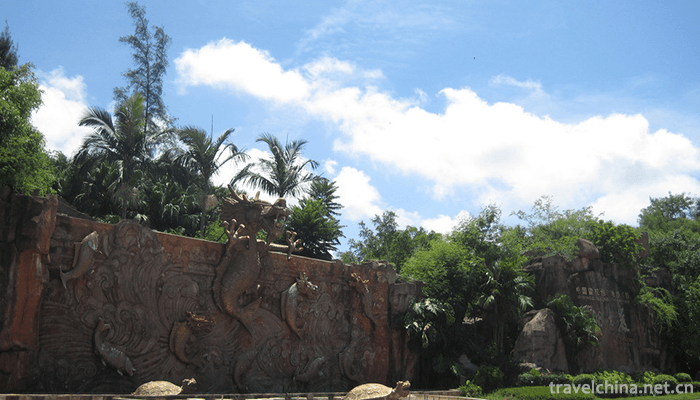
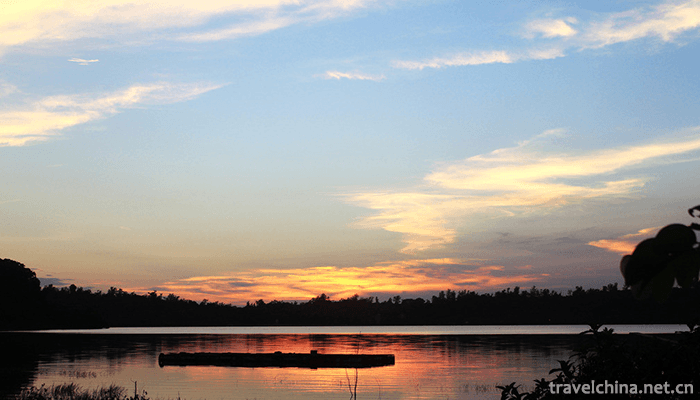
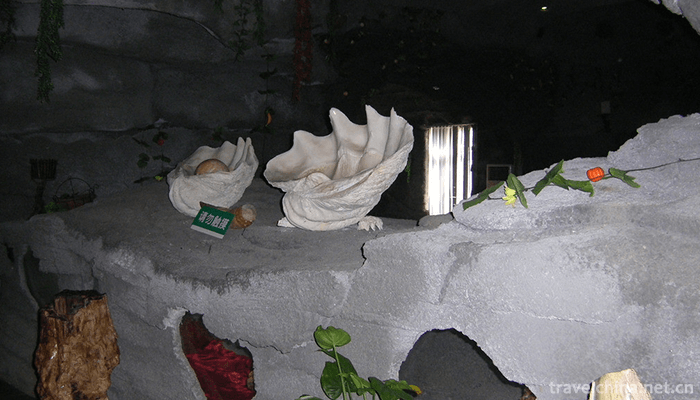

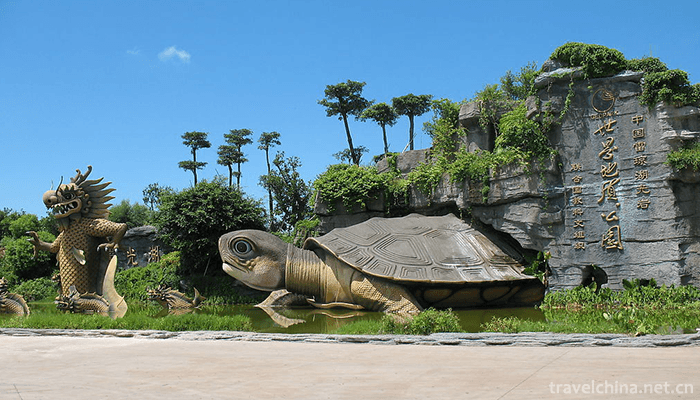
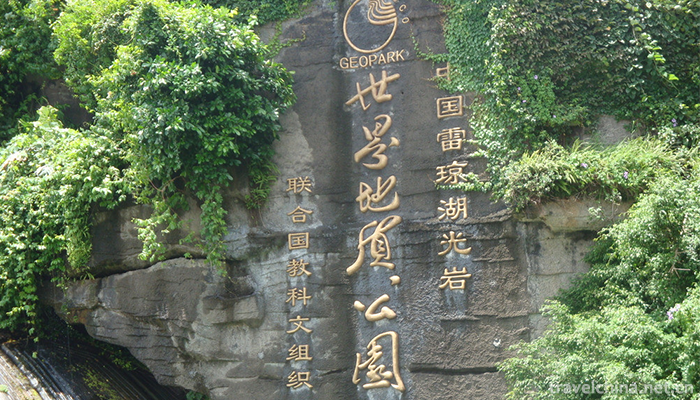

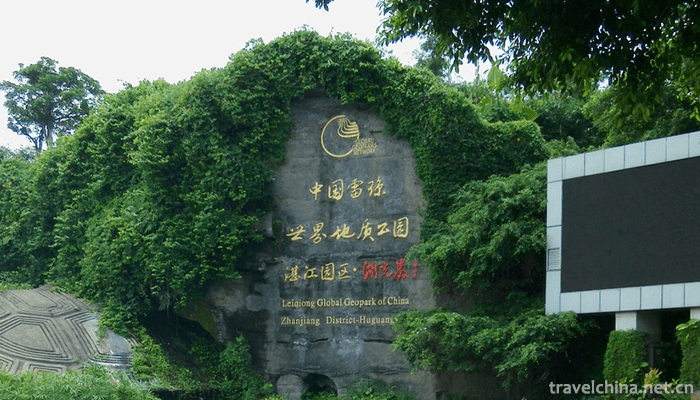

-
1.Anhui rescue
Anhui rescue Great rescue is a traditional feature of Shouxian County in Anhui Province, which has a history of more than 1000 years.
Time 2018-11-27 -
2.The Peninsula Shanghai
Shanghai Peninsula Hotel is located on the Bund, which has a long history. It is the only new building on the Bund in 60 years. It can enjoy the Grand View of the Bund, Huangpu River, Pudong
Time 2018-12-16 -
3.China Yellow River Building
The Yellow River Building of China has the Yellow River China History and Culture Exhibition Hall, the Yellow River Ningxia History and Culture Exhibition Hall, the Yellow River Impression Exhibition
Time 2018-12-22 -
4.Dalian Modern Museum
Dalian Modern Museum is located at No. 10 Convention and Exhibition Road, Shahekou District, Dalian City. It is located in the northwest side of Xinghai Square. It is the first comprehensive museum na
Time 2019-01-07 -
5.Zhou Qiao old street
Zhouqiao Old Street is a national AAAA tourist attraction. The old street of Ximen in Jiading is located on the west side of Bole Square in downtown Jiading
Time 2019-01-21 -
6.Lion Lamp in Jinggangshan Hall
"Quantang Lion Lantern" is a traditional Wushu athletic project spread in Huzhaoping Village, Shangxiang, Jinggang, Shandong Province. It has nearly 200 years history.
Time 2019-05-08 -
7.Coconut carving
Coconut sculpture is made of coconut shell, coconut palm and coconut wood as raw materials, and is carved into various practical products and plastic arts by hand. Coconut sculpture is one of the spec
Time 2019-07-11 -
8.Beijing Institute Of Graphic Communication
Beijing Printing College is a full-time general higher education institution established by the Beijing Municipal People's Government and the former General Administration of Press and Publication. Th
Time 2019-09-22 -
9.Capital Normal University
Capital Normal University (Capital Normal University), World class discipline construction universities , Ministry of Education of the People's Republic of China And Beijing Municipal People's Governm
Time 2019-09-22 -
10.Luzhou natural resources
The total amount of water resources in Luzhou is 6.657 billion cubic meters per year. The groundwater reserves are rich, reaching 1.065 billion cubic meters per year, among which Xuyong and Gulin counties in the south are the richest. The structural fissure water in the south
Time 2020-12-14 -
11.Nanchong economy
In 2019, Nanchong's GDP will reach 232.222 billion yuan, an increase of 8.0% over that of 2018. Among them, the added value of the primary industry was 40.425 billion yuan, an increase of 2.9% over 2018; the added value of the secondary industry was
Time 2020-12-17 -
12.Yibin transportation
Yibin is a transportation hub city in South Sichuan, which is famous for its comprehensive three-dimensional transportation network of water, land and air. It is located at the starting point of the golden waterway of the Yangtze River and the strategic point of Sichuan Yunna
Time 2020-12-18